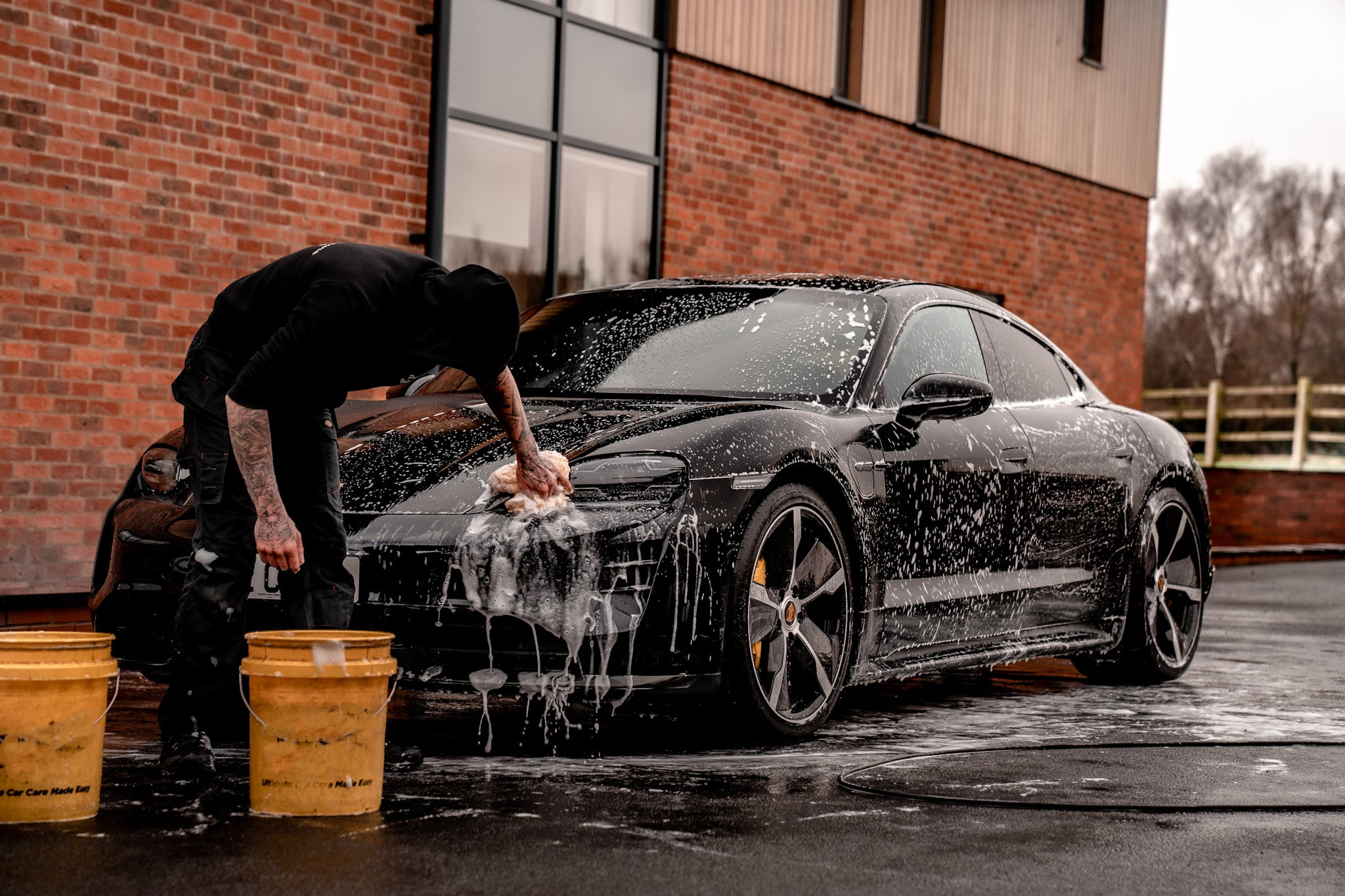Revealing the Science Behind Ceramic Coatings: Exactly How Does It Work and Why Is It Above Standard Choices?
Ceramic coatings have been obtaining popularity in numerous sectors for their outstanding performance and sturdiness. The science behind these coatings exceeds simple surface defense, delving into the detailed chemistry that makes them stick out from traditional choices (ceramic coatings san jose). Comprehending just how ceramic layers job and why they exceed traditional options is crucial for those looking for to boost the durability and strength of their products. What specifically sets ceramic finishes apart, and exactly how do they attain such remarkable outcomes?
The Chemistry of Ceramic Coatings
In understanding ceramic layers, delving right into the elaborate chemistry behind their structure is crucial for understanding their capability and toughness. Ceramic finishes are primarily made up of silicon dioxide (SiO2), which creates a strong and safety layer when applied to different surfaces. This chemical framework offers exceptional resistance to heat, chemicals, and corrosion, making ceramic finishings very sought after for a large range of applications.
The chemistry behind ceramic coverings involves the development of covalent bonds between silicon and oxygen atoms, developing an inflexible network that enhances the finishing's strength and durability. Furthermore, the visibility of various other aspects such as zirconium, aluminum, and titanium more enhances the covering's properties, supplying raised firmness and attachment to surfaces.
Comprehending the chemical make-up of ceramic finishes enables the personalization of formulations to match certain requirements, whether it be for automobile, industrial, or residential functions. By taking advantage of the power of chemistry, ceramic layers remain to lead the method for exceptional defense and performance in various industries.
Benefits of Ceramic Coatings

As an outcome, ceramic coverings make cleansing and preserving surfaces much easier and much less time-consuming. In general, the plethora of advantages used by ceramic coverings make them a remarkable option compared to conventional coating methods.
How Ceramic Coatings Bond
Ceramic finishes bond to surfaces via a procedure that includes molecular adhesion and chemical communications. When a ceramic finishing is used to a surface area, it develops a solid bond by chemically adhering to the surface area at a molecular degree.
Moreover, the chemical communications between the ceramic finish and the surface better boost the bond. ceramic coatings san jose. These communications permit the ceramic layer to develop a constant and seamless layer externally, giving superb protection and longevity. Unlike standard finishings that might remain on the surface area without completely bonding, ceramic coatings create a permanent bond official statement that is resistant to chemicals, UV rays, and rough environmental conditions

Basically, the bonding device of ceramic finishes ensures a reliable and long-lasting protective layer that surpasses conventional finish alternatives. This exceptional bond adds to the sturdiness, scrape resistance, and longevity of ceramic finishes, making them a recommended selection for different applications.
Resilience of Ceramic Coatings
The phenomenal long life of ceramic coatings stems from their robust molecular bond and chemical interactions with surface areas, making certain a long lasting protective layer that goes beyond traditional covering options. When applied, ceramic finishings create a solid bond with the substrate, developing a resilient obstacle versus different ecological stress factors such as UV radiation, chemicals, and abrasions. This bond is so secure that it can endure the rigors of everyday usage without wearing away or deteriorating promptly.
Unlike standard layers that might weaken gradually, ceramic coatings keep their integrity for an extensive period, giving resilient protection for the underlying surface. The strong molecular structure of ceramic coverings stands up to damaging, fading, and peeling, ensuring that the surface area continues to be secured and visually pleasing for years to find. This durability not only minimizes the requirement for regular reapplications yet additionally conserves time and cash in the long run. On the whole, the exceptional durability of ceramic finishings makes them a superior option for protecting a variety of surface areas in various applications.
Ceramic Coatings Vs. Conventional Choices
In contrast to conventional finishing techniques, ceramic coverings supply a distinct mix of toughness and protective capacities that set them apart in different surface area security applications. Conventional alternatives such as wax or sealers provide a momentary layer of security that can wear away swiftly, requiring constant reapplication. On the other hand, ceramic finishes create a solid bond with the surface area, creating a semi-permanent or permanent obstacle that is very immune to abrasion, chemicals, UV rays, and extreme temperature levels.
Furthermore, ceramic coverings provide exceptional hydrophobic buildings contrasted to standard coatings. The hydrophobic nature of ceramic finishings creates water to grain up and roll off the surface, lugging dust and pollutants with it. This self-cleaning effect assists to preserve the surface area's cleanliness and gloss for extended periods, minimizing the requirement for regular Check Out Your URL upkeep.
Furthermore, ceramic finishings have a thicker layer contrasted to typical options, supplying boosted scratch resistance and security against small influences. This longevity ensures durable performance and assists maintain the visual charm of the treated surface click this for an extensive period.
Verdict
In final thought, the science behind ceramic coatings hinges on their chemical composition and bonding properties, making them exceptional to conventional alternatives. The benefits of ceramic coverings include boosted toughness and security for surfaces. By recognizing just how ceramic coatings work and their advantages over typical choices, one can make enlightened choices when taking into consideration finish choices for numerous applications.
Unlike traditional coatings that may sit on the surface without completely bonding, ceramic coatings create an irreversible bond that is resistant to chemicals, UV rays, and rough environmental conditions.
The extraordinary durability of ceramic finishings stems from their durable molecular bond and chemical communications with surfaces, making sure a resilient safety layer that surpasses standard finish options.Unlike typical coverings that may deteriorate over time, ceramic layers keep their integrity for a prolonged period, providing lasting protection for the underlying surface.In comparison to traditional coating approaches, ceramic finishings provide an unique mix of toughness and safety capabilities that set them apart in numerous surface defense applications. By recognizing just how ceramic finishings work and their advantages over standard choices, one can make enlightened decisions when thinking about finish options for different applications.